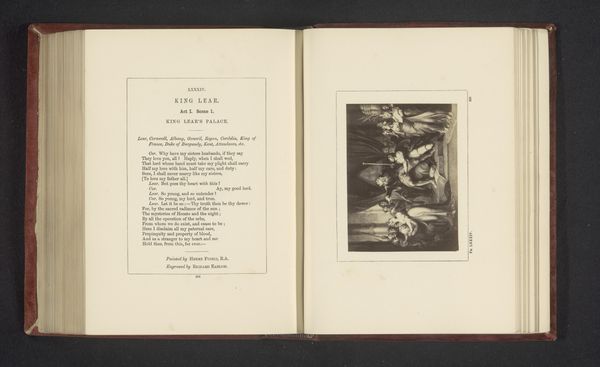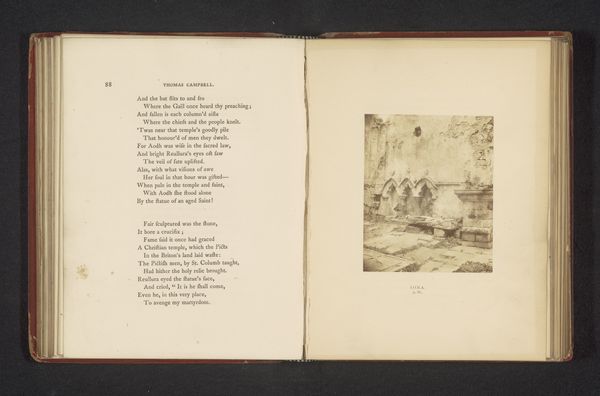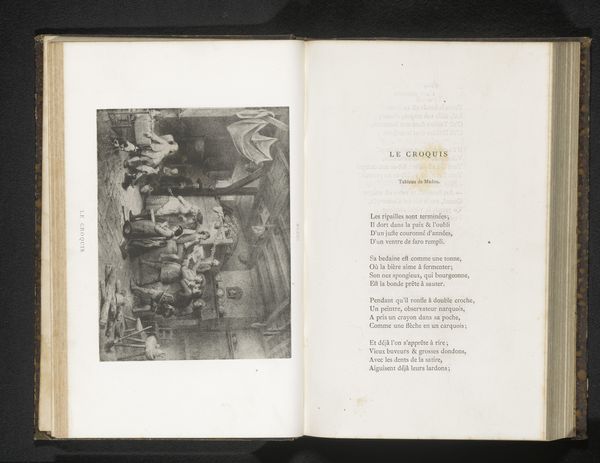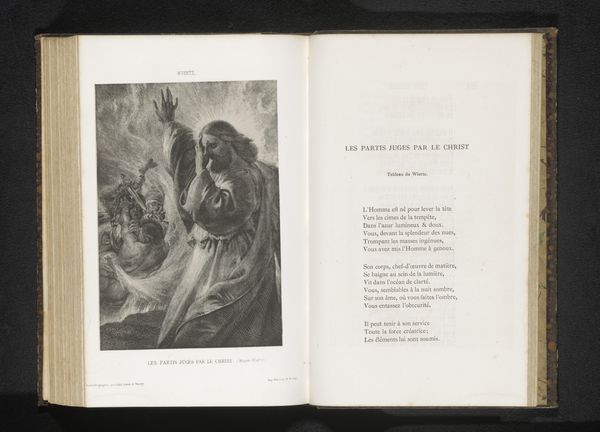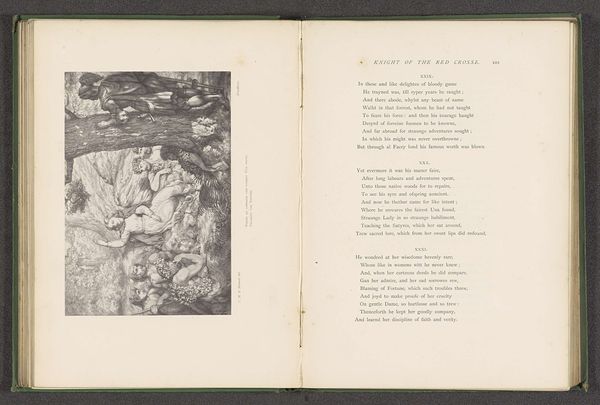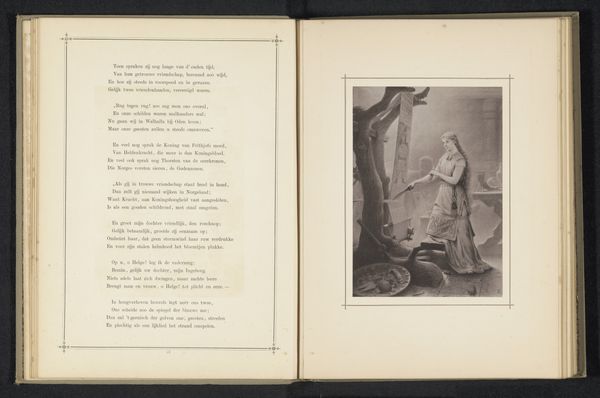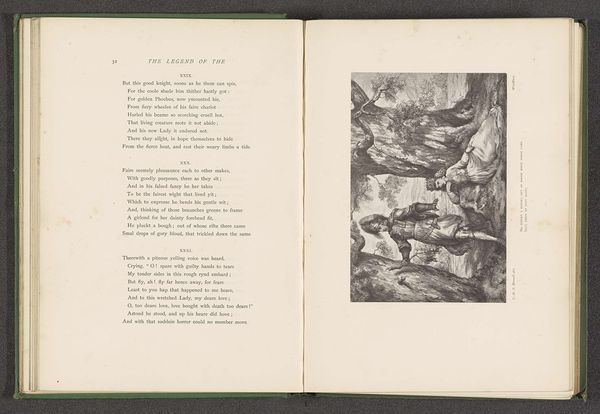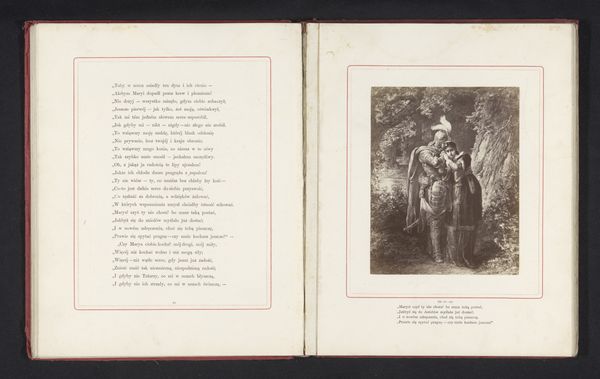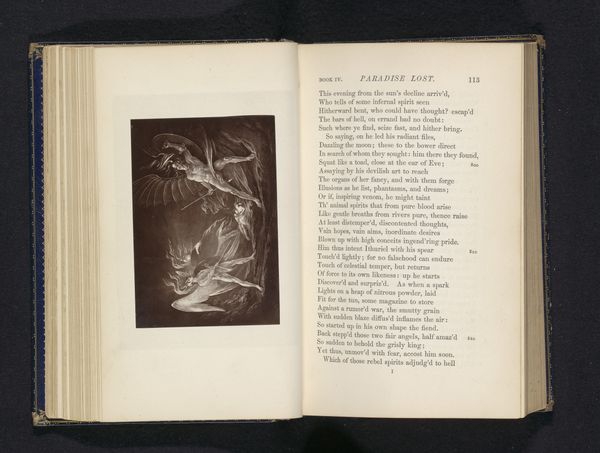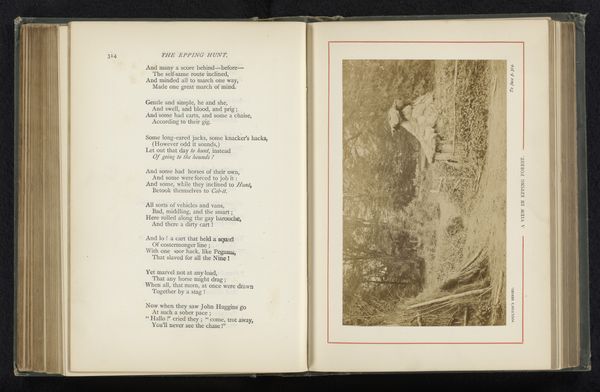
Dimensions: height 135 mm, width 103 mm
Copyright: Rijks Museum: Open Domain
Curator: Here we have a print entitled "Reproductie van een werk van Antoine Wiertz," or, "Reproduction of a Work by Antoine Wiertz." We believe it was made before 1867. The print, an etching on paper, is currently held here at the Rijksmuseum. What are your initial thoughts? Editor: My first impression is somber. The light and dark contrast creates a sense of brooding contemplation. It depicts figures in what appears to be classical attire in a densely shaded landscape. It evokes the complex narratives of Romanticism. Curator: The composition certainly emphasizes tonal contrasts, a stark play of light and shadow across the figures. Observe how the etcher's lines define forms and create depth within a limited grayscale palette. This print echoes Wiertz's broader interest in exploring grand historical themes through carefully orchestrated arrangements of figures. The poses and expressions seem staged to create the most dramatic effects. Editor: I would also note the original historical context. Wiertz and his contemporaries faced turbulent sociopolitical landscapes following the 1848 revolutions. His work reflected shifting ideas around nationhood and challenged societal norms. Here, classical allusions evoke anxieties around progress and questions of identity in a rapidly changing society. The landscape can be read as an active player rather than a static setting, echoing nature's power over human action. Curator: You draw a convincing connection between the external environment and Wiertz's focus on history painting and genre painting. The medium, etching, allows for an intricate detail, though it lends itself well to stark contrasts like we see here. The themes align strongly with romanticism’s interests, for example the idealised female form that takes inspiration from antiquity. Editor: In thinking about these idealized women: are we not reproducing those systems when we speak of the beautiful female body, erasing questions of social inequity when we focus solely on form? Curator: But shouldn't we begin with appreciating the form before addressing the social politics within the picture? After all, isn't the art an object, first and foremost? Editor: That very act of focusing exclusively on the art object—or freezing it in time, disconnected from its environment—runs the risk of silencing other possible narratives and perpetuating established viewpoints. Curator: I concede, then, that each vantage point brings enriching layers to the artwork. Understanding both form and historical situation can result in richer understandings. Editor: Indeed, viewing art as enmeshed in the complex dynamics of past and present allows it to resonate on a multitude of planes. Thank you.
Comments
No comments
Be the first to comment and join the conversation on the ultimate creative platform.
